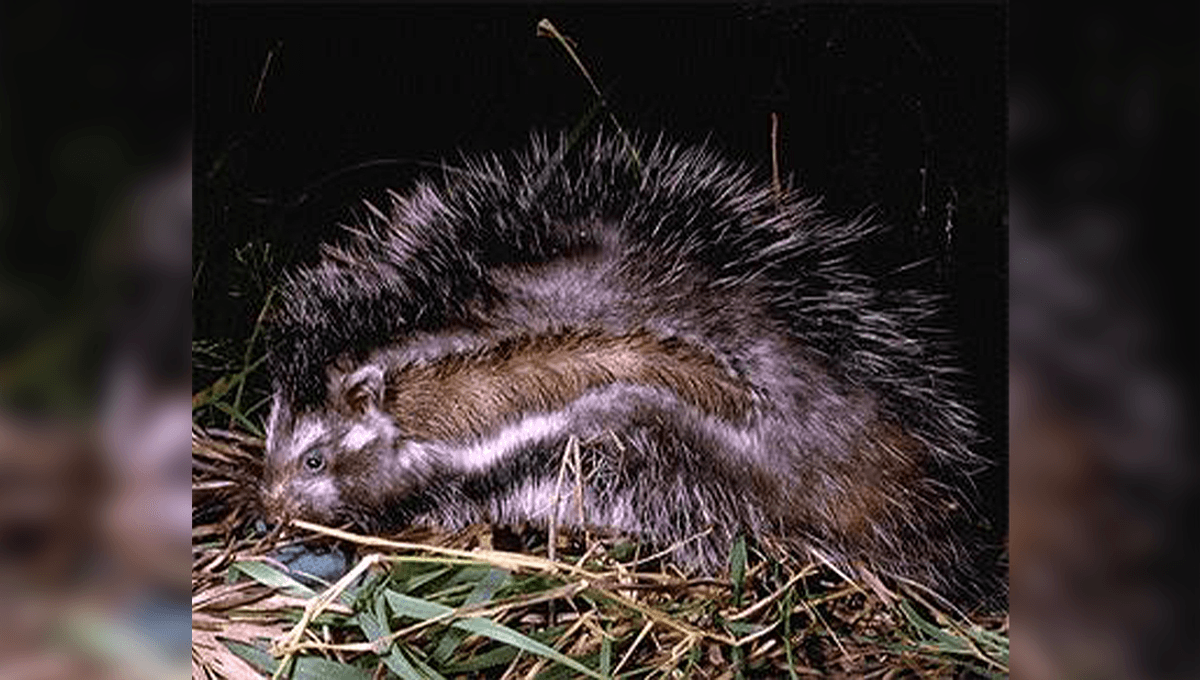
Ever wondered what it would look like if you could combine the features of a rat, a skunk, and a porcupine? Well, wonder no more, because nature has already dished up such a creature: the African crested rat (Lophiomys imhausi). It looks endearingly bonkers, but don’t be fooled. This maned rodent has a toxic trick up its sleeve – or, should we say, in its fur.
At the center of the black and white stripes of fur running along its body, the crested rat holds toxins from the arrow poison tree (Acokanthera schimperi). That’s the same plant that’s often used in making African arrow poisons (hence the name), the toxins reportedly capable of taking down elephants, let alone a puny human.
But until relatively recently, we didn’t actually know for sure that the crested rat – both the world’s only poisonous rodent and the only mammal known to sequester plant toxins – was poisonous, or what its choice of poison was.
Still, long before its true nature was confirmed, people knew something was off about the funny little puffball. In a 1923 note, George Hammond Goldfinch, a game ranger in Nakuru, Nairobi, wrote that the local people “had the superstition about this animal that if anybody got bitten by it he died.”
Goldfinch interpreted that to mean that somebody had been bitten by the rat, and that had led to blood poisoning, from which they died – but it seems unlikely that just one incident would form a widely held superstition. The locals were on to something.
But it still wasn’t necessarily the bite itself that was the problem – it’s what might have been in the rats’ saliva, and something that would eventually end up in their fur.
It was in 2011 that the first scientifically reported evidence of its nifty use of toxins came. Researchers from the UK, Kenya, and the US described how a single crested rat individual gnawed at the roots and the bark of the arrow poison tree, chewed it, and then slathered the toxic mixture onto specialized hairs that soaked it up.
One study doesn’t make for a solid conclusion, however. And so, in 2018, another research team set up a series of live and camera traps in Kenya to see if this was just an isolated case, or if this behavior was indeed widespread throughout the species.
What they discovered backed up the previous team’s findings; when 22 captured crested rats were offered arrow poison tree branches, 10 of them chewed on them and/or anointed (the fancy term for applying the poison) themselves at least once.
The researchers observed no changes in the rats’ behavior after chewing or anointing either, suggesting that they’re resistant to the toxin’s effects. Exactly what provides them with that resistance remains unknown.
It makes them sound pretty badass – but having spent time observing their social interactions too, the researchers have a somewhat less intimidating picture of them.
“They’re herbivores, essentially rat-shaped little cows,” lead author Sara Weinstein told University of Utah magazine TheU. “They spend a lot of time eating, but we also see them walk around, mate, groom, climb up the walls, sleep in the nest box.”
Cow-like cutie patooties? Meh, I think we can overlook the poison in that case.
Source Link: Killer Fur: There’s Only One Poisonous Rodent In The World, And It Can Take Out An Elephant